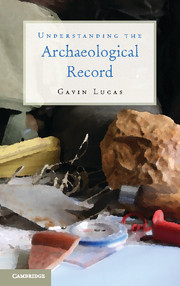5 - Archaeological Entities
Published online by Cambridge University Press: 05 June 2012
Summary
In the previous chapters, I examined three broad ways in which archaeologists have defined or perceived the archaeological record – as the remains we encounter and the archive we produce, as the formation of deposits and assemblages, and as material culture. My argument is that one of the key problems with contemporary theory is that it addresses each of these facets independently; in effect, we have a set of diverse and lively theories about fieldwork and data collection, formation processes, and materiality, but none of these theories seems to be talking to the others. This kind of fragmentation has created serious problems for archaeological stories, notably expressed in what I have called a new interpretive dilemma, in which our explanations often hover between vacuity and incommensurability. This is not meant as a judgement of all archaeological stories, but it is suggested to be a real and common enough problem to warrant consideration. In this and the subsequent chapter, I explore ways in which we can connect these diverse facets of the archaeological record and thus forestall precisely this kind of dilemma. I should make it clear, however, that this is not some attempt at a grand or unified theory for archaeology; nor is it a rebuke of theoretical pluralism. Rather, my critique is directed at fragmentation, whereby the connections between theories or realms of archaeology have become so detached as to be effectively severed. The case is quite simple: if we cannot connect our practices of excavation, survey, or artifact analysis with some broader theory, perhaps introduced from an outside discipline, then something is surely wrong. These connections may be long and circuitous or short and direct, but they must surely be traceable. One way to ensure this traceability is to map out a broad terrain among the three discourses on the archaeological record. In this chapter, therefore, I attempt to draw connections between the archaeological record as formation theory sees it and in terms of the discourse on materiality and material culture (Chapters 3 and 4). In the following chapter, I link this synthesis to the third aspect, the remains and/or archive (Chapter 2).
- Type
- Chapter
- Information
- Understanding the Archaeological Record , pp. 169 - 214Publisher: Cambridge University PressPrint publication year: 2012



